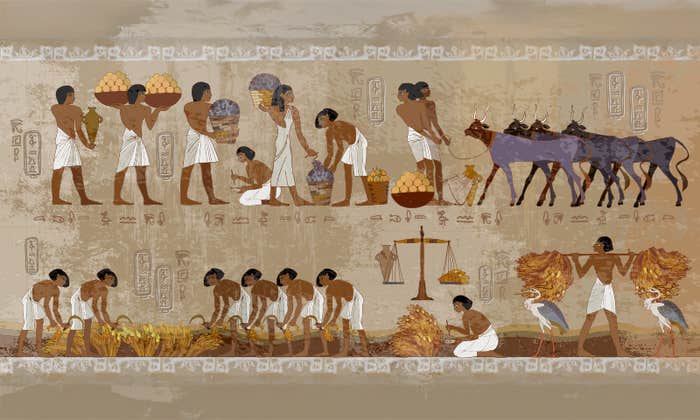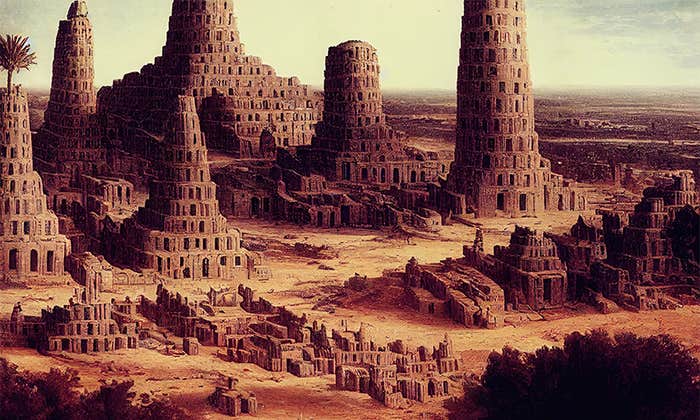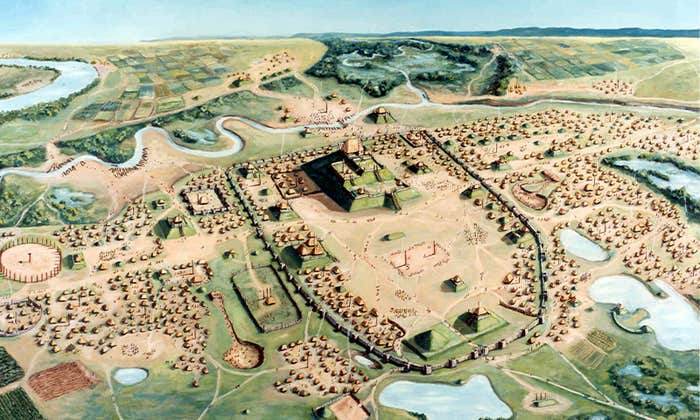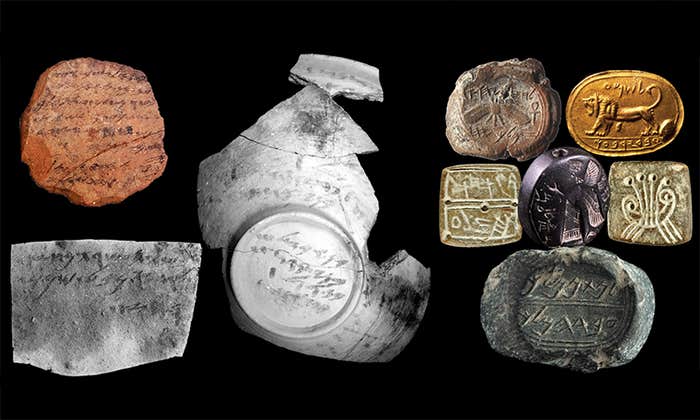In the skies over Moscow, in the decades before the collapse of the socialist state, stood three symbols of the space program: the rocket, the cosmonaut, and the red star. The rocket is still atop the 1964 Monument to the Conquerors of Space, a 110-meter-high titanium sculpture beside Prospekt Mira with the Alley of Cosmonauts leading to its base. The cosmonaut Yuri Gagarin stands on a 30-meter-high column on Leninsky Prospekt, his arms pulled back in the style of a classic Marvel superhero, as though about to leap upward toward the stratosphere. These two monuments look at once back to the period of Soviet space exploration and forward to the time of planetary probes and space stations. The red star, symbol both of astronomy and of communism, preceded the epic period of space flights and once crowned the dome of the Moscow planetarium located on Sadovaya-Kudrinskaya street.
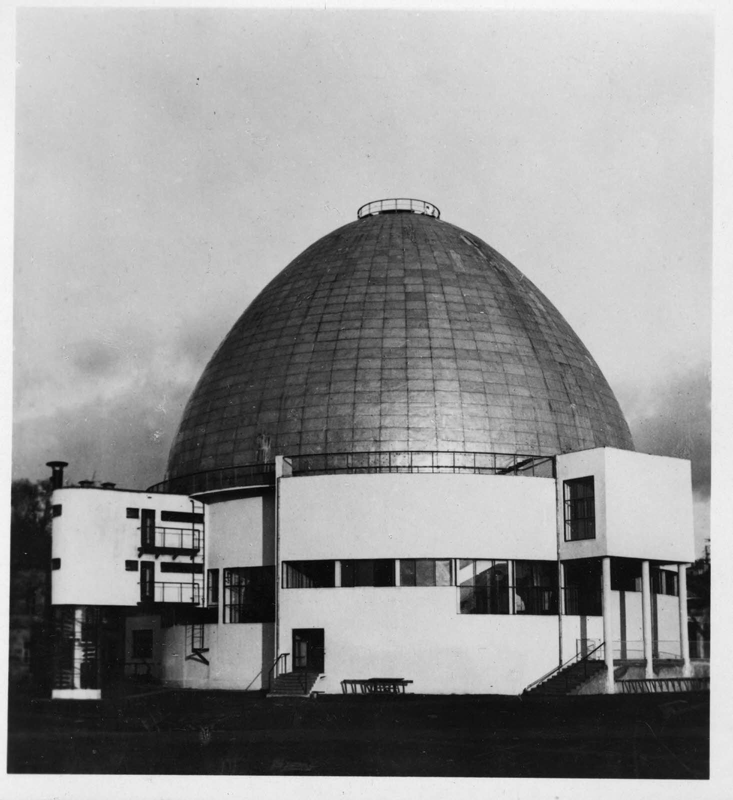
This planetarium stands at the intersection of influences created by politics, engineering, style, theater, astronomy, space exploration, and religion, each of which affects the others. It was one of the last buildings to be put up in the style known as Constructivism, and thus looks both back to the original fervor of new Soviet society, and forward to the difficult decades of state socialism.
Constructing a planetarium in Moscow was never going to be merely about an educational display of the movements of the planets and the stars, however inventively demonstrated by the Bauersfeld projector. Russia had a longstanding and diverse attitude to the cosmos, mixing science, esotericism, Gnosticism, a belief in a world beyond the purely physical, and a feeling that the nation was specially destined to explore the planets and beyond. The 19th-century writer Nikolai Fyodorov, founder of what is known as Cosmism, had proposed that the atoms of the deceased were scattered throughout the universe, and that steps should be taken to resurrect the dead, who would then live on other planets, since there would not be enough room for them to inhabit the Earth. This interplanetary resurrection theme would later filter into Soviet science fiction, for instance in Andrei Tarkovsky’s 1972 film Solaris, where the dead reappear on a spaceship above an aquatic planet. However, Fyodorov also inspired early Russian ideas on planetary travel. Konstantin Tsiolkovsky, the first Russian rocket designer—who in Tsarist times had already worked out the basic formulas for the thrust required by engines intending to escape the Earth’s atmosphere—had been a follower of Fyodorov. Tsiolkovsky constructed the first models of rockets and dirigibles, indulged in complex and semi-mystical theories as to the makeup of the universe, and wrote science-fiction novels about Russian space explorers encountering aliens on other planets. He was deeply eccentric—photos show him with long, flowing locks, surrounded by his rockets and airships as he holds up his ear trumpet as though to detect distant sounds.
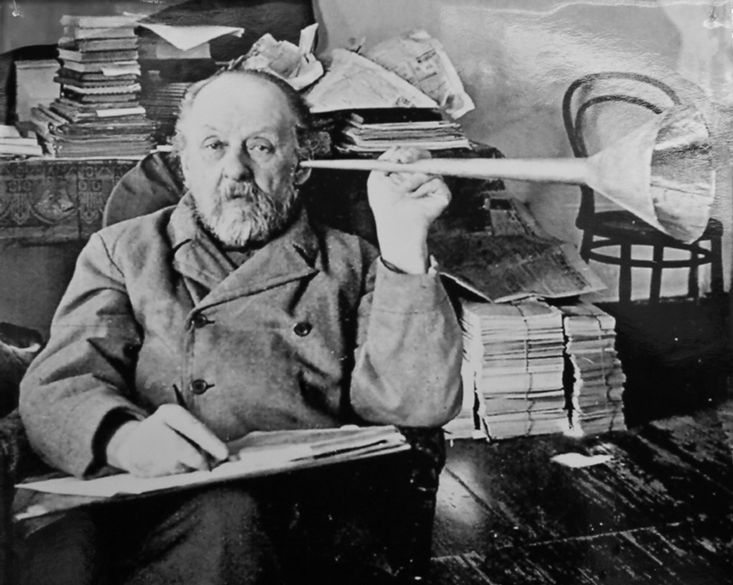
Early Russian science-fiction writers described the coming age of interplanetary flight. Alexander Bogdanov in his 1908 Red Star described Mars, the definitive red planet, as inhabited by a benign race keen to associate with the Russians. Aleksei Tolstoy wrote the 1923 novella Aelita at a time when the color red had acquired political significance. It tells of two Soviet cosmonauts who visit Mars, discovering that its population is a slave race dominated by corrupt rulers and priests and assisting in a 1917-style revolution, made slightly more complicated by the lead cosmonaut falling for the Martian queen. Aelita was made into a spectacular and very popular film by Yakov Protazanov in 1924, with remarkable Constructivist-inspired sets.
Societies with mass membership were set up in Moscow in the 1920s to promote a Soviet flight program. The popular Soviet enthusiasm for all things planetary inevitably required the construction of a planetarium. There was considerable interchange between Weimar Germany and the socialist USSR; both saw themselves—however misguided it would later turn out to be—as new nations with an interest in creating a new world based on a broad popular culture, and in the 1920s both had highly progressive artistic, theatrical, and cinematic movements. Rumors of Bauersfeld’s invention quickly spread to Moscow. David Riazanov, a former comrade in exile of Leon Trotsky and director of the Marx-Engels Institute, an organization devoted to Soviet philosophy and history, proposed the construction of the planetarium in 1926. The building was originally intended to be part of a large science complex—including a zoo, a museum, and a library—that would exemplify the rising power of pure science. Evolutionary time would be presented in the zoo and cosmic time in the planetarium, both set against the traditional religious time of the discredited Russian Orthodox Church. Riazanov traveled to Germany to visit various planetariums and to commission Bauersfeld and the engineer Franz Dischinger to construct a planetarium for Moscow. Bauersfeld and Dischinger possessed skills lacking in the USSR: the technology to construct the projector and the engineering expertise to put up the ferro-cement dome. Lightweight construction and the projection of light would thus be combined to produce a building of the new age, with the minimum use of material. This Moscow planetarium was to be on an ambitious scale, with an internal diameter of 27 meters and seating for 1,440 spectators. The Zeiss dumbbell projector provided by Bauersfeld was the latest model, now able to project 8,956 stars and to switch the point of projection to various latitudes, a useful facility considering the vast size of the USSR.
The planetarium is there to educate the masses, but it is also mysterious, magical.
Much of the design of the Moscow Planetarium was determined by the technical requirements of the Zeiss projection system. The building has three stories: a basement, an entrance and foyer at ground level with a set of radial portal frames to support the floor above, and a main projection hall on the first floor. Additional service spaces needed to be added to the circular form, so four elements project from the central circle—the entrance, with its vertically curved wall; a volume for storing the projector to the side when it is not in use; another volume with an elegant, glass-clad spiral staircase; and offices for the staff. These four protruding volumes create a dynamic plan, at once circular and also pushing out from the center to the periphery.
The exterior dome, constructed in ferro-cement, was given a parabolic form, which was highly unusual—in fact, it was the only parabolic dome ever built over a planetarium. This outer dome is only 8 centimeters thick at the top and 12 centimeters at the bottom, achieving a ratio of shell thickness to internal volume of 1:280—less than that of an eggshell to an egg. It was constructed from a framework of steel rods laid according to a timber form-work and onto which was sprayed concrete. Due to a shortage of materials in Moscow, a cement substitute was created from ground clamshells, which have roughly the same chemical composition as cement—and which for some reason were available in landlocked Moscow. The insulation was a layer of moss. The materials of the sea and of the land were used to create a shell for the artificial sky, which was then covered externally with aluminium sheeting imported from Germany.
There were precedents for parabolic domes in Germany: the domes of the unbuilt Meyer planetarium, and of the Glass Pavilion of Bruno Taut—constructed in Cologne for the 1914 Deutscher Werkbund Exhibition and which the German writer Paul Scheerbart described as allowing “contemplation of the light of the moon and stars.” But there were other Russian and Soviet influences. Mikhail Barshch had also been on a tour of Soviet Asia and was interested in the diverse forms of mosque domes, some of which are parabolic. Parabolic domes were becoming fashionable in Moscow, appearing in Ivan Leonidov’s visionary 1928 project for a Club of the New Social Type as well as Moisei Ginzburg’s unbuilt 1931 proposal for the Palace of the Soviets. From the exterior, the planetarium resembles a cylindrical egg cup cradling a great egg, which is particularly significant to the Russian celebration of Easter, the time of rebirth and resurrection—the linking of the daily rising of the sun and the rebirth of the soul is a reminder of a theme that goes back to those images of the Egyptian goddess Nut. The red star at the summit of the dome inevitably evokes the stars on traditional Russian onion domes. It is not necessary to say that one of these influences was decisive; a building can be indebted to diverse, even contradictory sources.
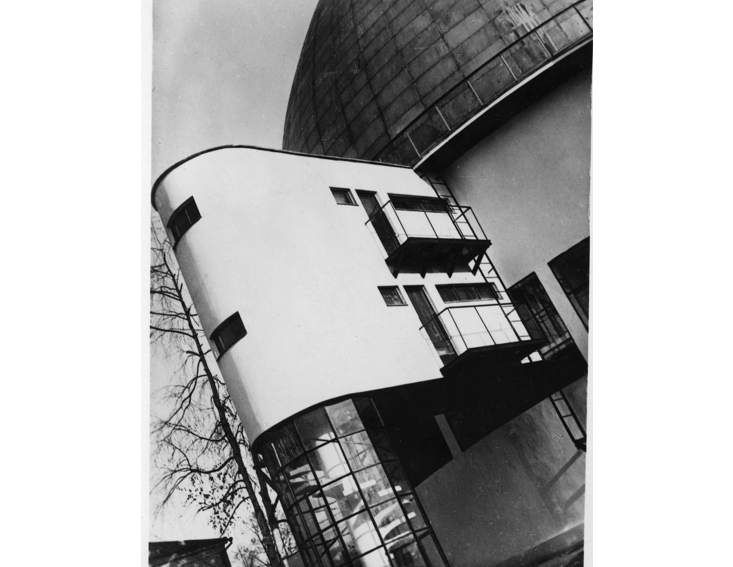
One of the themes of certain early Soviet artists, such as Kazimir Malevich, had been the elimination of the object and its replacement by abstract shapes and lines of movement. The Moscow Planetarium can be seen as constructed of various movements. In section, the parabola of the exterior dome rises above the semi-circle of the interior projection screen, the parabola outlining the elliptical path of planetary motion and the semicircle the more ancient notion of the perfect sphere of the heavens. The curves within the radial portal frames on the ground floor and the partial parabola of the entrance canopy echo these lines, so that the entire section consists of curved lines of potential movement. Meanwhile, the circular plan of the planetarium is based on both circumferential and centrifugal movement, as the circular lines of the great circular hall are balanced by the four forms flung outward, including the elegant stair spiralling in its glass cylinder. The architectural dynamics determine the movement of the spectators, who enter axially through the curved entrance, circulate among the portal frames that radiate out from the center of the foyer, and move up along the steps running around the circumference of the building to take their places in the projection hall. To these can be added the lines of planetary movements created by the Zeiss projector. The illusion that the dome of the building has vanished and that there is only a night sky above results in the planetarium’s final Dematerialization.
In 1927 Aleksei Gan, editor of the architectural magazine Sovremennaya Arkhitektura (Modern Architecture) and Constructivist theorist, published drawings of the first version of the planetarium and proclaimed it to be a successor to both traditional Russian theater and the Orthodox Church:
The theatre has been up until now nothing but a building dedicated to the service of cult. How this service has been performed, to which cult it is dedicated, plays no role … Our theatre must be different; it should draw the spectator to a love of science. The planetarium—a theatre of optical science—is also one of the forms of our theatre. In it, people do not act, but manage a complex technical apparatus. In this theatre, all is mechanized … So the theatre at the service of cult passes to the service of science. In this theatre, Man, equipped with machinery, extends his sense of perception, sees the most complicated mechanics of the movement of celestial bodies. This will help him forge a scientific understanding of the world and free himself from both the fetishism and prejudice of savage priests and the pseudoscience of European civilization. For this theatre, we need to build a new building.
For Gan, traditional, pre-revolutionary theater was no more than a kind of church service, whereas the planetarium would produce the most refined version of the theater performances proposed by Vsevolod Meyerhold and Lyubov Popova, in which narrative was abandoned, actors moved in precise patterns, and sets became large machines to accommodate these movements. But by 1927 experimental Soviet theater performances were already part of the past, as the original impetus for a new theater had faded. For those like Gan, still hoping for a revival of the earlier enthusiasm, the planetarium offered a new opportunity. Its form resembles a temple, within which the audience sits reverently as the mysteries of the heavens are revealed on the interior of the dome—the traditional location in Orthodox churches for a large painting of God staring back down.
Other members of the Soviet cultural vanguard were fascinated by the planetarium. Alexander Rodchenko visited the building several times and produced a series of photographs in his characteristic style, with the camera held at an angle, giving the images an unsteady feel, as though the surface of planet Earth has somehow shifted off its axis. He recorded the dome in the snow, the Zeiss projector, the extruded service boxes, and a suitably cloth-capped proletarian descending the spiral staircase; a similar figure features in his shots of the Shukhov radio tower. Some of these photographs were featured in Gan’s article in Sovremennaya Arkhitektura. Rodchenko wrote in his 1939 autobiography, Black and White:
A planetarium appeared in Moscow.
This was an enormous fantastical apparatus.
It was the realisation of his fantasy.
Made of black metal and glass.
With forms that resembled no living creature.
It was called The Martian …
It made him search and search for a fantastical reality.
Or for the fantasy in reality.
And to show a world that people had not yet learned to see,
from new perspectives, from points of view, and in new
Forms.
The planetarium is here linked to Mars, the red planet, and to fantasy aliens—H.G. Wells’s War of the Worlds was very popular in Russia—and new forms of life. Rodchenko suggests that the task of the photographer and of the planetarium were linked. The planetarium offered a new vision of the cosmos that no one had seen before, and this inspires him to look in a new way through the camera lens, to take photos that reveal previously unobserved aspects of everyday life.
This interest in the planetarium as a revolutionary building was shared by the poet Vladimir Mayakovsky, a close colleague and friend of Rodchenko, who may have visited the planetarium at the same time as the photographer. Mayakovsky was another mesmerizing early Soviet figure, at times too individual to handle and at others a kind of bootboy for the revolutionary state. In one of his final poems, written shortly before his suicide in 1930, Mayakovsky declared, in his characteristically individualistic grammar:
Proletarian woman
proletarian man
come to the planetarium.
Come in
hear the lively buzz.
In the lecture hall.
Spectators sit awaiting the sky to be shown
The head-sky-manager comes
the expert in sky matters
He comes
pushes and twirls the million celestial bodies.
The proletarian masses become charged with some invisible celestial force. The “head-sky-manager”—the lecturer who also controlled the projector—becomes in Mayakovsky’s words part scientist, part priest, part shaman, and part theater director. As is often the case with Mayakovsky, his support for the new socialist world has an undertone of mysticism: The planetarium is there to educate the masses, but it is also mysterious, magical. The projector could speed up time, summon up vast cosmic spaces, and move at will its viewing point to a distant location. It was an appropriate mechanism to revive a declining revolutionary impulse.
The large crowds that came to the Moscow Planetarium to see the scientific display of the paths of the planets and stars understood that the shows were also intended as an inspiration for the future expansion into space of the Soviet people. Tsiolkovsky’s model rockets, accompanied by images of Soviet colonization of other planets, were shown prominently in the lobby of the planetarium. Two rockets were placed by the entrance, imitating columns, as though architecture and rocketry could be combined. In the early 1940s the Moscow Fantastic Theatre put on shows about Copernicus, Giordano Bruno, and Galileo. During the early 1960s, Soviet spacecraft, such as the spherical Vostok 3KA-2 launched with the space dog Zvezdochka shortly before the Yuri Gagarin mission, were displayed in the lobby on the ground floor of the planetarium. In 1957 a large globe was set up on the ground floor of the planetarium, on which was plotted Sputnik’s changing position in orbit above the Earth. Visitors would be inspired by the gradual expansion of the Soviet program beyond the Earth’s atmosphere. The planetarium was used in the early 1960s to show the workings of the solar system to prospective cosmonauts, some of whom, such as Gagarin, returned to lecture on their experiences to large audiences. The planetarium was thus linked with the early achievements of the Soviet space program—the visible sign within Moscow of the success of Soviet technology in comparison to its Western rivals.
The later story of the Moscow Planetarium mirrors that of the Soviet Union. It had been brought to life at a moment when Soviet society was rapidly changing, when the great hopes of the revolution were fading before a political system moving toward the Stalinist dictatorship of the 1930s. In the 1930s the Stalinist government added the red star—it did not feature in the original design—so as to link the planetarium to the regime. At some point, the exterior walls were painted bright blue, as though to deny its links with the white modernism of the 1920s, and the building’s curving entrance porch was removed. A photo from the early 1940s shows the building already in a decayed state, surrounded by anti-aircraft batteries dug into the rubble around the building, ready to fire up into, rather than investigate, the heavens.
William Firebrace is an architect and the author of Things Worth Seeing, Marseille Mix, and Memo from Nemo. He is based in London.
Reprinted with permission from Star Theatre: The Story of the Planetarium by William Firebrace, published by Reaktion Books Ltd. © 2017 by William Firebrace. All rights reserved.





















